All you need to know about Gold, Silver and other precious metals
Each industry needs raw materials that must be converted into a final usable product. Just like vegetables, lentils and flour that are the raw materials when cooking a meal for your family, metals, in the same way, are the raw materials when manufacturing jewellery. Fine jewellery uses Precious Metals 1 Extensively as they offer the wearer a range of benefits; from being resistant to corrosion and tarnishing, precious metals are
also much tougher and stronger. Gold, Silver and Platinum are metals that are smooth to touch, take on the body temperature and have appealing colours giving each wearer a very intimate experience with the metal.
“1 Precious Metals: Metals that have a high value in jewellery, namely Gold, Silver and Platinum.”
Precious metals have been chosen as ideal metals because of their superiority in terms
of:
• Durability
• Rarity
• Workability
• Allure
DURABILITY is the metal’s ability to withstand wear, heat and chemicals. Wondered why Platinum is used for eternity bands? Platinum is denser than gold and this means when used to set stones the setting is stronger and can be thinner than gold. Platinum is known to be the most durable as compared to other metals and fits the deal for use in jewellery. Gold is, in turn, less durable than platinum but still can handle a lot of wear and tear. This is the key reason why gold from shipwrecks remains undamaged underwater without much corrosion in spite of all the sea salts and chemicals. Silver, on the other hand, is a metal that tarnishes the quickest because sulphur compounds that can be found in the air, which reacts with the silver thereby corroding it.
RARITY is another reason why these metals are so popular for use in jewellery. Rarity is a primary contributor to the price of these metals, which means their availability on the surface of the earth. Gold is an extremely rare metal in nature and is easy to extract from the earth whereas platinum, on the other hand, is more available but is so challenging to extract that, only a few companies have the resources to unearth the metal. This is the primary reason why the price is also much higher than that of gold. “This is why diamonds are expensive and very rare to find”.

WORKABILITY relates to the fact that precious metals can be worked into sheets or wires with ease. Noble metals are known to be malleable and ductile and working with them is a lot easier as compared to various other metals known to man. In India, we use paper-thin gold and silver sheets on sweets called “pedas” and in temples to decorate religious idols, which is the perfect example of how thin these metals can be beaten into. Fine metals are entirely ductile and thus can be moulded into thin wires or rings for the use in jewellery and other industries. This ability to be transformed into elongated wires is beneficial for jewellery as they can be fashioned into dainty jewellery pieces, which would otherwise have to be thick, big and chunky.
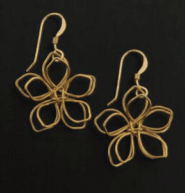
ALLURE refers to the colour and lustre of the metal. Gold’s natural yellow colour gives an instant association to the sun and the warmth it radiates. Whereas platinum and silver although they display similar colours, they are quite different in terms of lustre, as platinum takes on a higher lustre than silver. White metals are the perfect to relate to youth, brightness and timelessness.
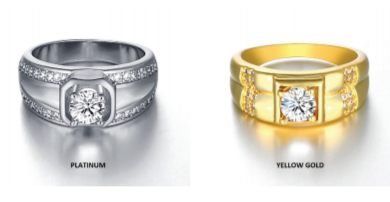
GOLD & ALLOYS Precious metals tend to be very soft in their pure form, which is why they are often mixed with other metals to make an alloy for use in jewellery. These alloys have superior strength and become more durable as an outcome. When a metal has not been mixed with any other metal, the term fine is used. For example, in 14K gold, 58.3% of the gold is fine, whereas the other percentage comprises a mix of other metals used to improve its strength. Gold can alternatively be referred to in Parts Per Thousand (PPT) and 14K gold would convert to 583 parts of gold per thousand. Gold is the only metal that uses the term Karats (K) and the finer the gold, the yellower the colour of the metal, which means 10K gold is far less yellow in colour as compared to 24K gold.
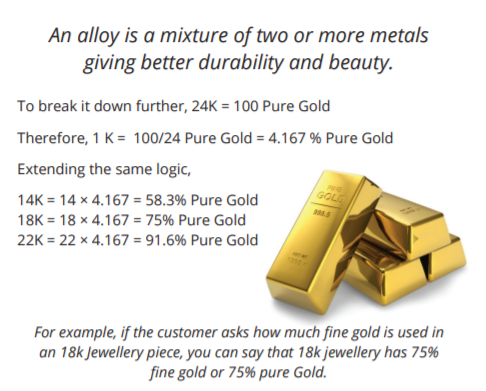
At KuberBox, we use 18K and 14K gold in most of our jewellery because of the metals enhanced durability. 18K gold is more workable and the cost of making and retailing jewellery is reduced. This is because if there is wastage when filing, cutting or finishing the gold, the amount of gold lost is less. You will learn about this in detail as we go through the programme. Since 18K and 14K are stronger alloys of gold it is not easily scratched which maintains the polish of the gold for a longer period of time. Even with its reduced fineness 18K and 14K gold still has a pleasing yellow colour, which tends to complement the skin tone of the wearer. Further, it is strongly advised to not use 22k gold in jewellery when you are going to stud the jewellery with Diamonds and Gems.
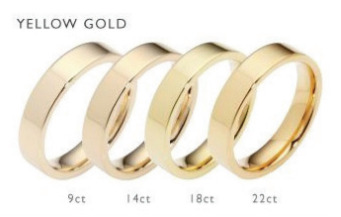
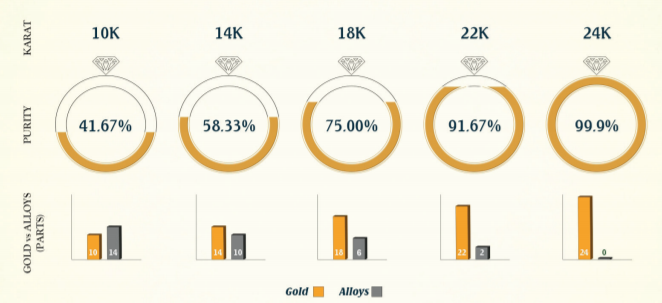
In India 18K and 22K gold is the preferred karatage when it comes to jewellery because of the nice yellow/ golden colour and strength of the gold. Have you seen different colours of gold, like Rose Gold and White Gold? Here’s a quick insight into what they are made of.
| GOLD ALLOY USED TO OBTAIN COLOURS | |
| Yellow Gold (14K or 18K) | Gold, Copper, Silver, Zinc |
| Rose Gold (Pink) | Gold, Copper, Silver (Content of Copper is increased) |
| White Gold | Gold, Nickel or Palladium, Copper, Zinc |
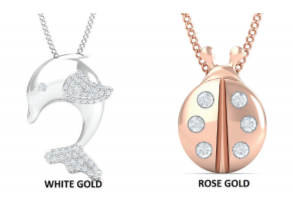
Platinum being a very hard metal is alloyed with many other metals. Some of the being a stronger metal has its fair share of benefits such as being more secure when used as prongs to grip the gemstones effectively. Platinum jewellery is perfect to be passed down over generations because it preserves well. However, the higher prices of platinum goods may be a deterrent for many. Platinum, when used in jewellery, must contain at least 500 parts of platinum in its alloy to be considered platinum as per International Standards . Most platinum jewellery you see have 850-900 parts of platinum in its alloy and can be identified because of its hallmarks, just like BIS hallmarked on GOLD.
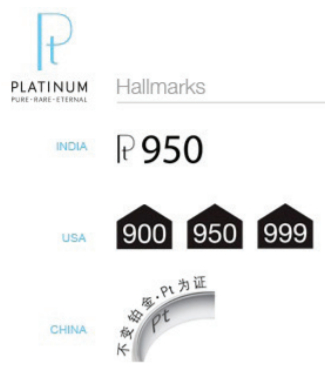
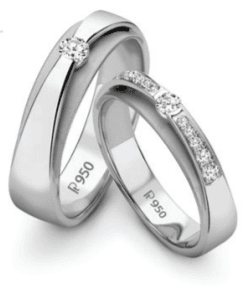
RHODIUM Rhodium, a fine metal in itself is generally used to plate white gold or platinum. It protects the softer metal under and gives a whiter finish to the metal. Rhodium has a mirror like finish which can make diamonds appear bigger as the metal is much more reflective. This fine metal is a by-product of platinum, which explains why Rhodium is so hard. That is why jewellers find it hard to work with Rhodium. It is also quite an expensive metal. Rhodium is thus solely used to “coat” metals like platinum and white gold.
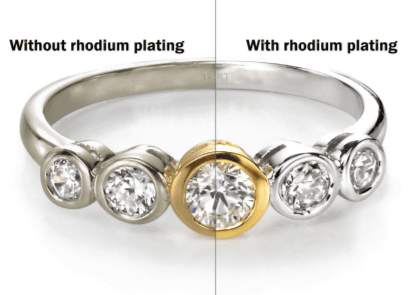
SILVER Silver is used heavily in jewellery these days because it is a cheaper and lighter alternative. Sterling Silver as you must have already heard is a popular term, but what does it truly mean? Sterling Silver is in fact 92.5% silver, with the remaining 7.5 % being copper, giving the metal enhanced durability with a nice white colour. Being a cheaper option, silver gives its customers the look of a nice white metal at a significantly lower price.
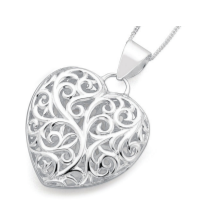
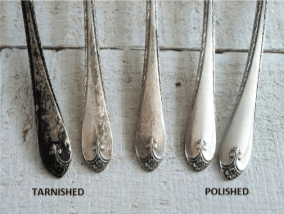
SILVER JEWELLERY: But silver has its own share of disadvantages that are part of the bargain. Oxidation is a big problem when it comes to silver jewellery, cutlery and artefacts. Pure silver oxidises with the sulphur present in the air and tarnishes sterling silver because of the presence of other metals in the alloy. This leaves your silver with a dull shine and an unacceptable blackish layer on the surface. If you live near the ocean or in a humid area, you will notice your silver pieces tend to tarnish much quicker than in any drier state or area. Silver also scratches easily and has a low hardness on the Mohs scale at around 2.5-3. This means the metal must be cleaned and re-polished regularly to retain its polish.
FAQ:
- Can I wear sterling silver every day?
Yes. Sterling Silver is one of the best metals for everyday wear. Be sure of cleaning the jewellery with a cleaning cloth or special microfiber cloth for cleaning purposes.
2. Which is better rose gold or yellow gold?
Yellow gold is prone to having scratches and may also lose shape as opposed to rose gold. It may require more maintenance and polishing to maintain its luster. Rose gold is much more durable than yellow gold (or even white gold) due to the copper content.
All you need to know about Gold, Silver and other precious metals by Team KuberBox



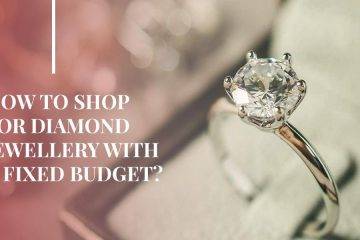
2 Comments
Neena Ramanathan · October 26, 2021 at 11:41 am
I am interested in the diamond nose studs and wanted to know if the diamonds are industrial stones .
Thanks
Sourav · December 14, 2021 at 7:16 am
Hi Neena, firstly I would like to apologize for the delayed response. We are not sure how we missed your comment earlier. There are both kinds of diamonds in the market – industrial and non-industrial. Usually, gem-quality diamonds are used for jewellery and other fine arts whereas diamonds that do not have good colour and clarity and have low intrinsic value are preferred for industrial use, thus making them industrial diamonds.